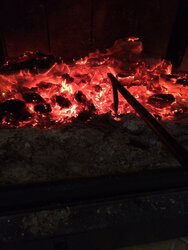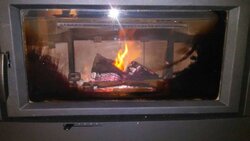griam01
Member
Gives it more draft different lengths of flue requires different amount of air. My insert he has a long flue about 24 feet I can close the air completely my stove the equivalent of the insert has a 14 foot flue I need to keep the air open about 1/4 on slow burns.
I have a 25 foot flue. I can get decent burn times I think all the way closed down but my ash and coals are filling most of the bottom by morning.
What is your reload procedure? What temp do you reload at or what are your looking for before you reload? Do you put just a few pieces on to get it fired back up again on the coals or do you full load immediately? Do you take the coals around level or all up front?Approximately how long do you leave the door open? Do you close your bypass or air down first? How long before each? I am sorry for all the questions I just feel like I am missing something with my reload and I could be doing better. Thank you in advance for your help.
Sent from my iPad using Tapatalk



